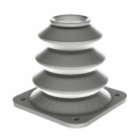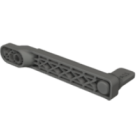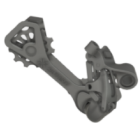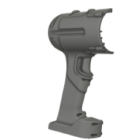How to reduce 3D printing cost
3D printing delivers immense value in prototyping, short-run production, and product customization — but those benefits can come with significant cost. Often, expenses quietly build up through material waste, failed prints, over-processing, or inefficient design. That’s why understanding how to reduce 3D printing cost is essential, especially if your goal is profitability, repeatability, or scalability.
Lowering cost doesn’t mean lowering quality. Instead, it means fine-tuning your workflow, improving print success rates, and choosing the right technology for the job. Here’s how professionals cut costs without compromise.
Smarter design, smarter spending
Most opportunities to reduce cost lie in the design phase. By adjusting the geometry to be more print-friendly, you can save both time and material. For example, eliminating unnecessary overhangs reduces the need for support structures, which consume filament or powder and require additional post-processing. Likewise, hollowing out large models or applying lattice structures in non-load-bearing areas can drastically reduce volume and weight — and with it, cost. Another smart strategy is part consolidation: when you redesign multi-piece assemblies as single-print geometries, you reduce handling and assembly time while also shrinking the part count.
Nesting also plays a significant role in SLS or MJF printing. Optimizing how parts are packed into a build volume can increase throughput dramatically. This is especially true for batch production, where the ability to fill the build chamber efficiently determines how much value you extract from a single print cycle.
Material and technology selection
The choice of material has a direct impact on the final cost. Affordable thermoplastics like PLA or PETG work well for visual prototypes, while higher-performance options like PA12 or TPU, though more expensive, offer added durability that may be justified by the application. Technologies such as FDM are generally more economical for low-complexity jobs, whereas SLS becomes more cost-effective for complex geometries, functional parts, or larger batches thanks to the elimination of supports and better nesting efficiency.
It’s not just about material pricing — it’s also about how much waste is generated, what post-processing is needed, and how reliable the printer is with a given material.
Improve your print success rate
Print failures are one of the most preventable and costly issues in additive manufacturing. Every failed print wastes material, time, and often leads to additional troubleshooting and rework. Ensuring that printers are properly calibrated, that slicing profiles match the intended material and printer combination, and that first layers adhere well are all crucial steps to improve yield.
Monitoring the first 15–30 minutes of a print can help catch errors early. Whether it’s filament feed issues in FDM, recoater collisions in SLS, or curing inconsistencies in resin printing, addressing small issues before they escalate will protect your budget.
Limit post-processing time and cost
Post-processing is one of the most underestimated cost drivers in 3D printing. Depending on the technology, finishing can involve support removal, cleaning, depowdering, polishing, curing, or dyeing. Automating some of these steps — like using a depowdering station or bead blasting chamber — not only reduces labor costs but ensures consistent finish quality. Additionally, designing with post-processing in mind, such as avoiding hard-to-reach cavities or fragile features, will make parts easier to clean and prepare.
The goal is to strike a balance: enhance part quality without adding hours of unnecessary manual effort.
Reuse and refresh of materials
In powder-based technologies, the refresh rate — the percentage of new powder mixed with recycled powder — has a direct effect on your cost per print. Keeping this ratio optimal requires tight process control, proper storage conditions to prevent moisture uptake, and a consistent cleaning workflow. Using too much old powder increases the risk of weak parts; using too much new powder increases cost. Finding the sweet spot for each material type and application is a key operational challenge.
In FDM workflows, failed prints and support structures can sometimes be recycled into fresh filament with dedicated equipment, though this is typically viable only at larger volumes or in high-throughput environments.
Final thoughts
Reducing the cost of 3D printing is about optimization, not compromise. Whether you’re producing prototypes, tooling, or end-use parts, the goal is to streamline each stage — from design and material selection to print execution and finishing. By applying consistent process controls, embracing design-for-additive principles, and choosing materials and technologies strategically, you can achieve significant savings without cutting corners.
In a competitive market, efficiency is a form of innovation. When done right, cost-optimized 3D printing becomes not just sustainable, but scalable and profitable too.
Explore also
- How to calculate 3D printing cost?
- Factors affecting print cost
- 3D printing: in-house vs outsourcing
- Is 3D printing cost-effective for production and prototyping?
- Is buying a 3D printer worth it in 2025?
- How much is 3D printing?
- Is 3D printing profitable?
- Do 3D printers use a lot of electricity?
Related categories













